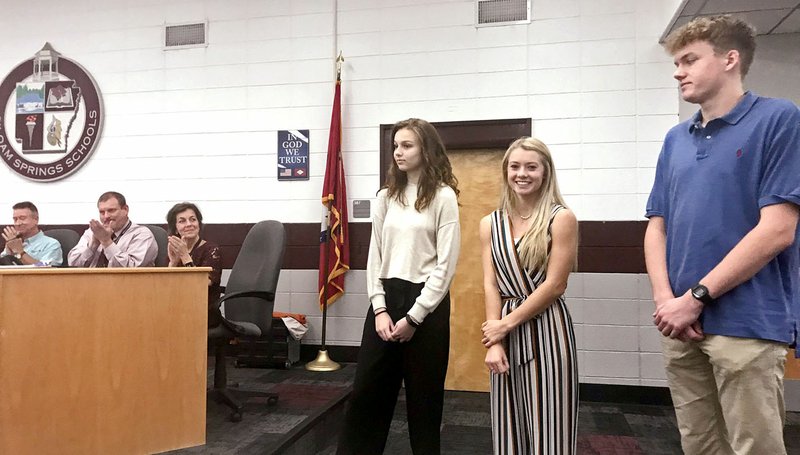Siloam Springs School District's annual report to the public focused on three strategies for increasing student success.
Assistant Superintendent Amy Carter presented the state-required report, which also includes enrollment statistics, demographic data and accreditation statuses for all schools in the district, during Tuesday's school board meeting. According to the report, enrollment statistics and demographic data have remained largely unchanged since last year and all of the schools in the district are accredited.
Siloam Springs School District Statistics
^2018/2019^2019/2020
Enrollment^4,274^4,376
English language learners^17%^18%
Low income students^13%^13.8%
Special education eligible students^13%^13.8%
Gifted and talented eligible students^6.29%^6.3%
*Statistics were gathered on Oct. 1 of each year.
Source: SSSD annual report to the public.
Student demographics
^2018-2019^2019/2020
White^56%^56%
Hispanic/Latino^30%^31%
American Indian^6%^5%
Two or more races^4%^4%
Asian^3%^3%
Black/African American^1%^1%
Hawaiian/Pacific Islander^0.4%^0.4%
*Demographics were gathered on Oct. 1 of each year.
Source: SSSD annual report to the public.
Since Jody Wiggins stepped into the role of superintendent in July, the school district has focused on professional learning communities, response to instruction and intervention, and the science of reading -- with a number of smaller areas of focus falling under each category, Carter said.
Professional learning communities are groups of educators who meet regularly to share expertise and collaborate to improve their teaching skills and student performance, according to the report.
Student work is analyzed by the teacher teams and data is collected through teacher-created common formative assessments to get a snapshot of how students are mastering essential standards, Carter said. Data is also collected through state-required assessments.
Schools in the district have revamped their schedules so that teachers in the same professional learning communities share a common planning time during the day in addition to their weekly Wednesday meetings so they have more time to collaborate, she said.
Response to instruction and intervention focuses on serving the whole child/every student by planning lessons to increase student performance as well as intervening to help students master standards if necessary, according to the report.
The program has three tiers. The first tier centers on classroom instruction -- insuring that teachers provide quality core instruction that meets rigorous standards and grade-level expectations, the report states.
It can be accomplished through lesson planning and aligning classroom instruction so that all students in a grade level are mastering expectations so they have a solid foundation as they advance in grade levels, Carter said. This core instruction will be sufficient for an estimated 80 percent of students to master the skills, the report states.
The second tier focuses on supplemental support inside the classroom designed for students who need extra help to master skills, the report states. An estimated 15 percent of students will require this form of intervention.
In the third tier, pull-out programs or one-on-one sessions will be implemented to provide students with intensive support. An estimated 5 percent of students will need third tier intervention, the report states.
The program also has a behavioral component, which includes developing individual behavior plans, the report states. It also includes helping manage and meet the social and emotional needs of the students, Carter said.
Teachers throughout the district have received more than 6,000 hours of training in the state-required science of reading program, and kindergarten and first grade teachers alone have received more than 2,000 hours of training, according to the report.
"It is one of the have-tos, but it is a good thing," Carter said. "It's shifted our thinking on how students read and what we need to be doing to help kids read and get a better grasp of those foundational skills."
The science of reading program is part of the R.I.S.E. (Reading Initiative for Student Excellence) Arkansas, which was launched by the Arkansas Department of Education and Gov. Asa Hutchinson in January to improve the state's reading levels, according to the Department of Education website.
The science of reading program provides educators with information about scientific reading instruction, which includes the components of phonological awareness, phonics, vocabulary, fluency and comprehension, according to the website.
Like the other two strategies, the science of reading program goes back to meeting the needs of students, Carter said.
"We've had all the training, what are we doing with it, that goes back to our few slides earlier, it's the planning, it's the preparing and its the implementing of what we're learning to make sure we are meeting the needs of each of our kiddos," she said.
General News on 10/20/2019
